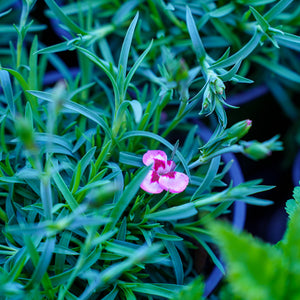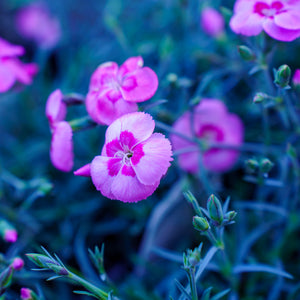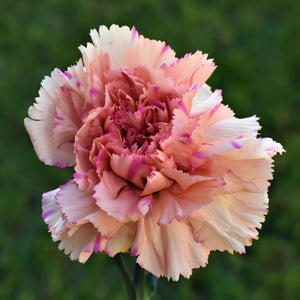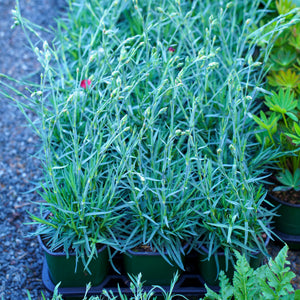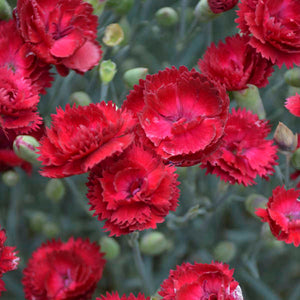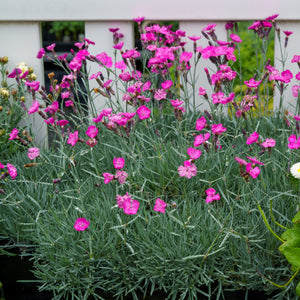The Dianthus Guide
Dianthus, often referred to as "pinks," is a diverse genus of flowering plants known for their spicy-sweet fragrance, frilled petals, and charming, long-lasting blooms. Whether you're working with borders, containers, rock gardens, or cutting beds, Dianthus adds rich color and irresistible scent to your garden. These cheerful perennials and biennials are beloved for their low-maintenance nature and their ability to bloom prolifically through the spring and summer months.
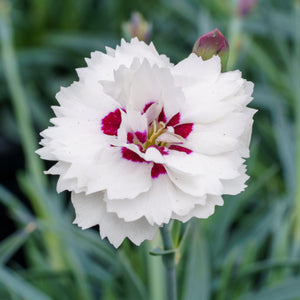
About
The Dianthus genus includes over 300 species, ranging from the classic Dianthus caryophyllus (carnations) to compact groundcovers like Dianthus gratianopolitanus. Many varieties form dense mounds of silvery-green foliage topped by colorful, often fringed flowers in shades of pink, red, white, and even yellow.
Notable selections include the frilly Dianthus plumarius 'Angel of Desire' and other 'Angel' series varieties, the fragrant and prolific 'Bath's Pink', the vibrant 'Fire Star', and the ever-popular 'Kahori' series, including 'Kahori Scarlet'. The American Pie and Constant Beauty series ('Bumbleberry Pie', 'Crush Orange') offer exceptional reblooming and compact forms, while the Mountain Frost and Paint the Town series ('Pink Twinkle', 'Paint the Town Fuchsia') deliver high performance and bold color. Whether you’re interested in upright, border types or creeping forms, there’s a Dianthus for every purpose.
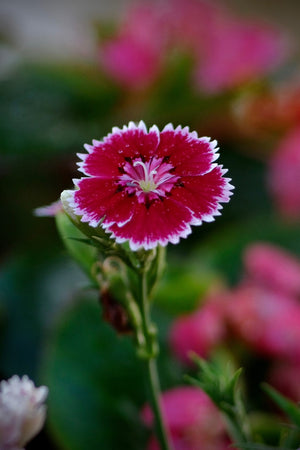
PLANTING
Dianthus prefers a sunny, well-drained location and benefits from thoughtful planting to promote long-term success:
- USDA Hardiness Zones: Generally hardy in Zones 4–9 depending on the cultivar.
- Soil: Loose, well-drained soil with neutral to slightly alkaline pH. Avoid heavy clay or overly rich soil.
- Sunlight: Full sun (6+ hours daily) ensures maximum flowering.
- Watering: Water regularly during establishment. Once mature, Dianthus is drought-tolerant but appreciates consistent moisture during bloom.
- Spacing: Space 6–12 inches apart, depending on mature size.
- Planting Time: Plant in spring after the last frost or in early fall to establish before winter.
Amend soil with compost or gravel to improve drainage. For heavy soils, consider raised beds or containers.
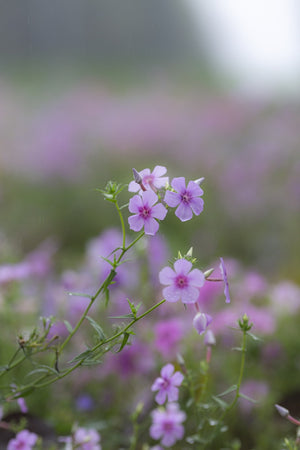
CARE
Dianthus is easy to maintain with a few routine care tasks. These hardy bloomers will reward consistent attention with months of flowering:
- Watering: Water when the top inch of soil is dry. Avoid waterlogged soil, which can lead to root rot.
- Fertilizing: Feed lightly in spring with a balanced, slow-release fertilizer. Avoid excess nitrogen.
- Deadheading: Remove spent flowers regularly to encourage repeat blooms. Pinch stems back to just above the leaf node.
- Pruning: Shear lightly after the first flush of bloom to maintain compact shape and promote reblooming.
- Pests & Diseases: Generally pest-resistant. Watch for crown rot in poorly drained soils. Occasional issues with aphids or slugs.
- Winter Care: Most varieties are evergreen in mild climates. Mulch lightly in late fall in colder zones.

HOW TO USE
Dianthus is incredibly versatile, suiting a wide range of garden styles and design applications. Their compact form and long bloom period make them ideal for filling gaps or enhancing visual flow:
- Borders & Edging: Excellent for edging walkways, garden beds, or along patios.
- Containers: Perfect for pots, hanging baskets, or window boxes where fragrance can be appreciated up close.
- Rock Gardens: Low-growing varieties thrive in rocky, well-drained soils.
- Pollinator Gardens: Attracts bees and butterflies with its nectar-rich blooms.
- Cut Flower Gardens: Many varieties make charming additions to floral arrangements.
Pair Dianthus with companions like lavender, coreopsis, creeping phlox, salvia, or low-growing sedum for textural contrast and continuous seasonal color.
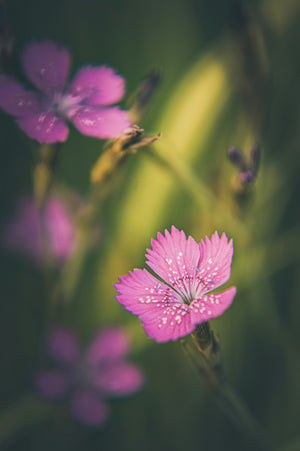
COMMON QUESTIONS
- How to deadhead Dianthus? Snip or pinch off faded flowers just above the next set of leaves to promote more blooms.
- Is Dianthus a perennial? Many are perennials, though some are biennials or annuals depending on the species and climate.
- Do deer eat Dianthus? Dianthus is generally deer resistant due to its fragrant, sometimes bitter foliage.
- Do Dianthus spread? Some types form dense mats and slowly spread, while others grow in tidy clumps.
- Are Dianthus poisonous to cats? Yes, Dianthus can cause mild gastrointestinal upset if ingested by cats.
- Do Dianthus bloom all summer? With regular deadheading and care, many varieties will bloom from late spring through early fall.
- Are Dianthus poisonous to dogs? Yes, they can also cause mild symptoms if eaten by dogs.
- Do rabbits eat Dianthus? Rabbits typically avoid Dianthus, especially the more fragrant varieties.
- How to care for Dianthus? Provide full sun, well-drained soil, water moderately, and deadhead regularly for continuous blooming.
Conclusion
Dianthus brings cheerful color, rich fragrance, and compact structure to gardens big and small. Whether you're drawn to the soft pastels of 'Pink Kisses', the bold hues of 'Electric Red', or the classic beauty of 'Firewitch' and 'Bath’s Pink', this plant family offers exceptional value for nearly every landscape. Easy to grow and endlessly rewarding, Dianthus earns its place as a garden favorite from spring through fall.

